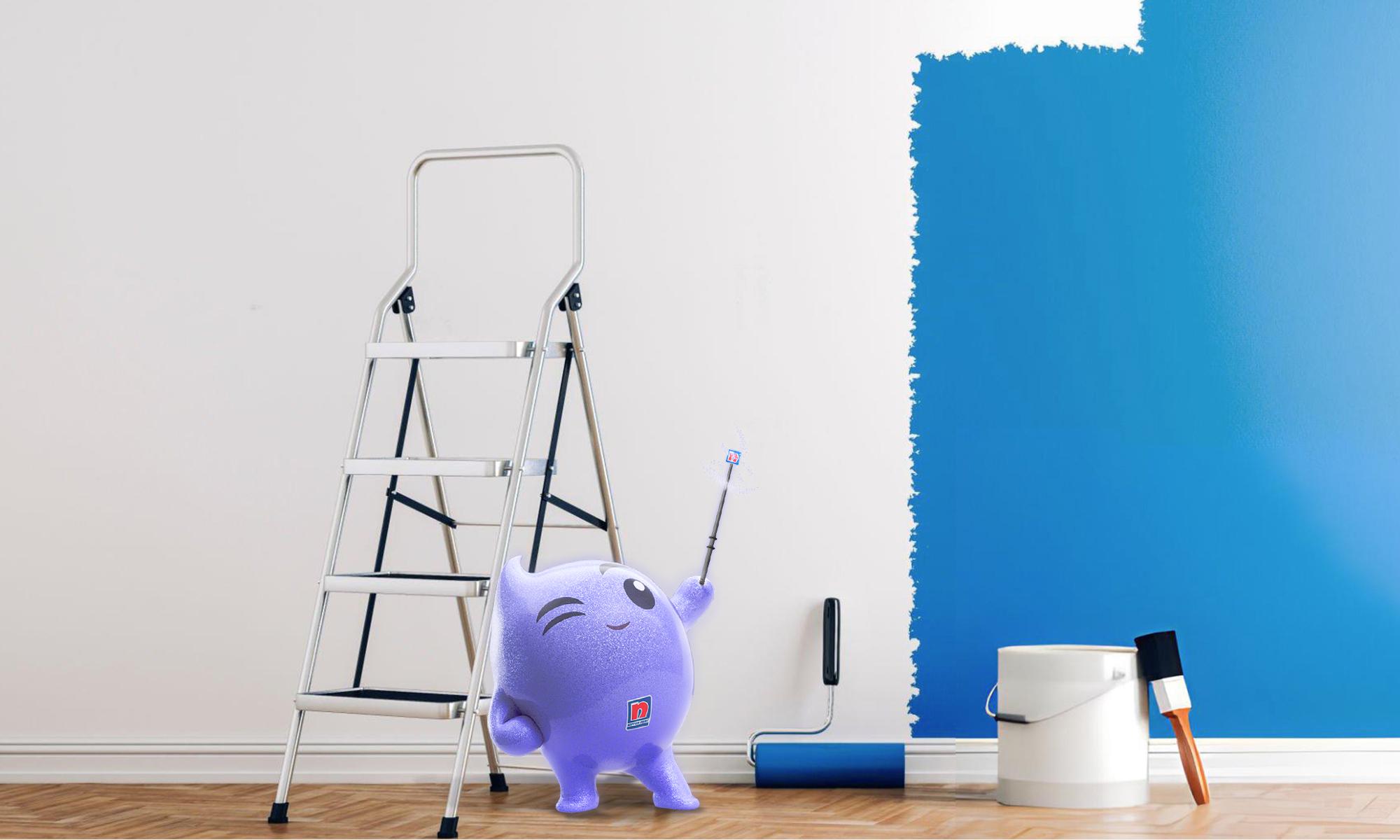15 Essential House Painting Terms
Whether you're planning a DIY project or working with a professional, understanding essential painting terms can make a world of difference. So, let's decode these terms together and get you to speak the language of paint like a pro!


Hey there, painting enthusiasts! It's your friendly neighborhood mascot Blobby from Neo by Nippon Paint here to brighten your day with some colorful knowledge. Today, we're diving into a crucial aspect of painting that often feels like a bit of a mystery: the language of paint.
Whether you're planning a DIY project or working with a professional, understanding essential painting terms can make a world of difference. So, let's decode these terms together and get you to speak the language of paint like a pro!
15 Essential painting terms
Base Coat: The initial layer of paint applied before the topcoat is basically a base coat. For example, applying a base coat ensures the final color is vibrant and true to its shade. Use this term when discussing the preparation phase of painting.
Topcoat: The final layer of paint that provides color and protection. Mention this term when referring to the finishing layer.
**Primer: **A preparatory coating applied before painting to improve adhesion. Using a primer basically helps the paint stick better and last longer. This term is used when preparing surfaces for painting.
Sheen: The level of glossiness in paint. Choose a sheen based on the room’s function, like matte for bedrooms and satin for kitchens. Discuss sheen when selecting paint finishes.
Gloss: A shiny or reflective quality in the paint. High gloss paints are perfect for high-traffic areas because they’re easy to clean. Use this term when describing paint finishes that reflect light.
Matte: A non-reflective, flat finish. A matte finish helps hide imperfections and is usually ideal for walls.
Satin: A finish with a soft sheen that’s not too glossy, it provides a subtle shine and is great for both walls and trim. If you want to opt for a medium level of shine then you need to go with Satin.
Eggshell: A low-sheen finish that resembles the surface of an eggshell. The eggshell finish is perfect for living rooms where you want a bit of shine without high gloss.
Semi-Gloss: A finish with more shine than satin but less than high gloss. The semi-gloss finish is ideal for trim and mouldings. Mention this term for areas that need durability and some shine.
High-Gloss: The shiniest finish available. A high-gloss paint is perfect for surfaces that need to be very durable and easy to clean. Use this term for areas needing maximum shine and durability.
Opacity: The degree to which a paint hides the underlying surface. "Higher opacity paints will cover stains better." Mention this term when discussing how well the paint conceals surfaces.
Binder: The component that holds the pigment together and helps the paint adhere. The binder in paint ensures it sticks to surfaces effectively. Use this term to refer to the composition of paint.
Volatile Organic Compounds (VOCs): Chemicals in paint that can affect air quality. These are chemicals that evaporate into the atmosphere. VOC emissions are more common than we think. "Low-VOC paints are better for indoor air quality." Use this term when considering the environmental impact of paint.
Masking Tape: Tape is used to protect areas from paint. Use masking tape to create clean lines and protect surfaces from accidental splashes before painting.
Caulk: A material used to seal gaps and cracks before painting. Painters generally apply caulk to fill in gaps for a smoother paint finish.
Understanding these essential painting terms can empower you to make informed decisions and communicate effectively with your painter or when embarking on DIY projects. Remember, knowing the lingo makes the whole process smoother and more enjoyable.
Stay tuned for more tips from yours truly, Blobby!
